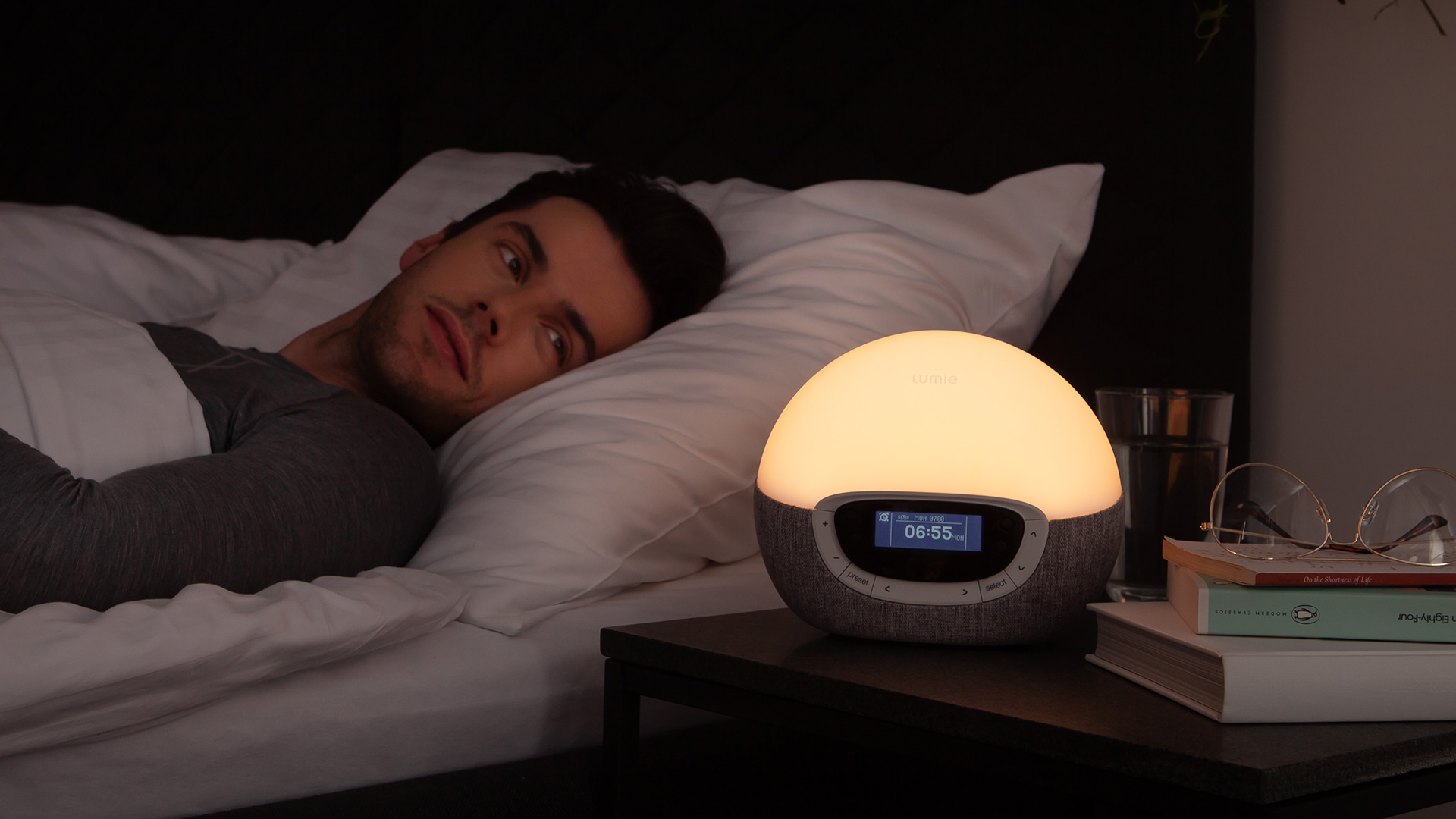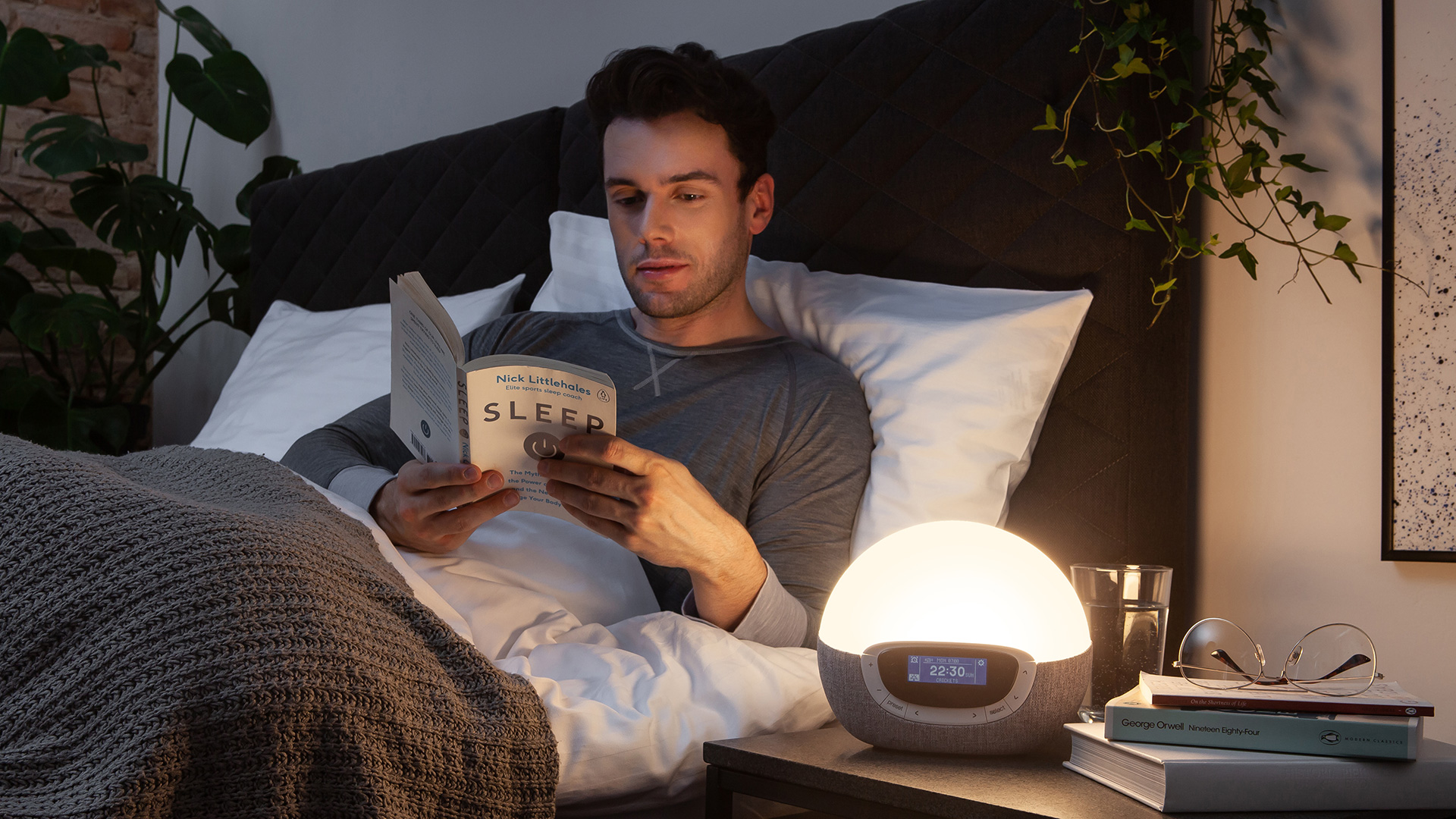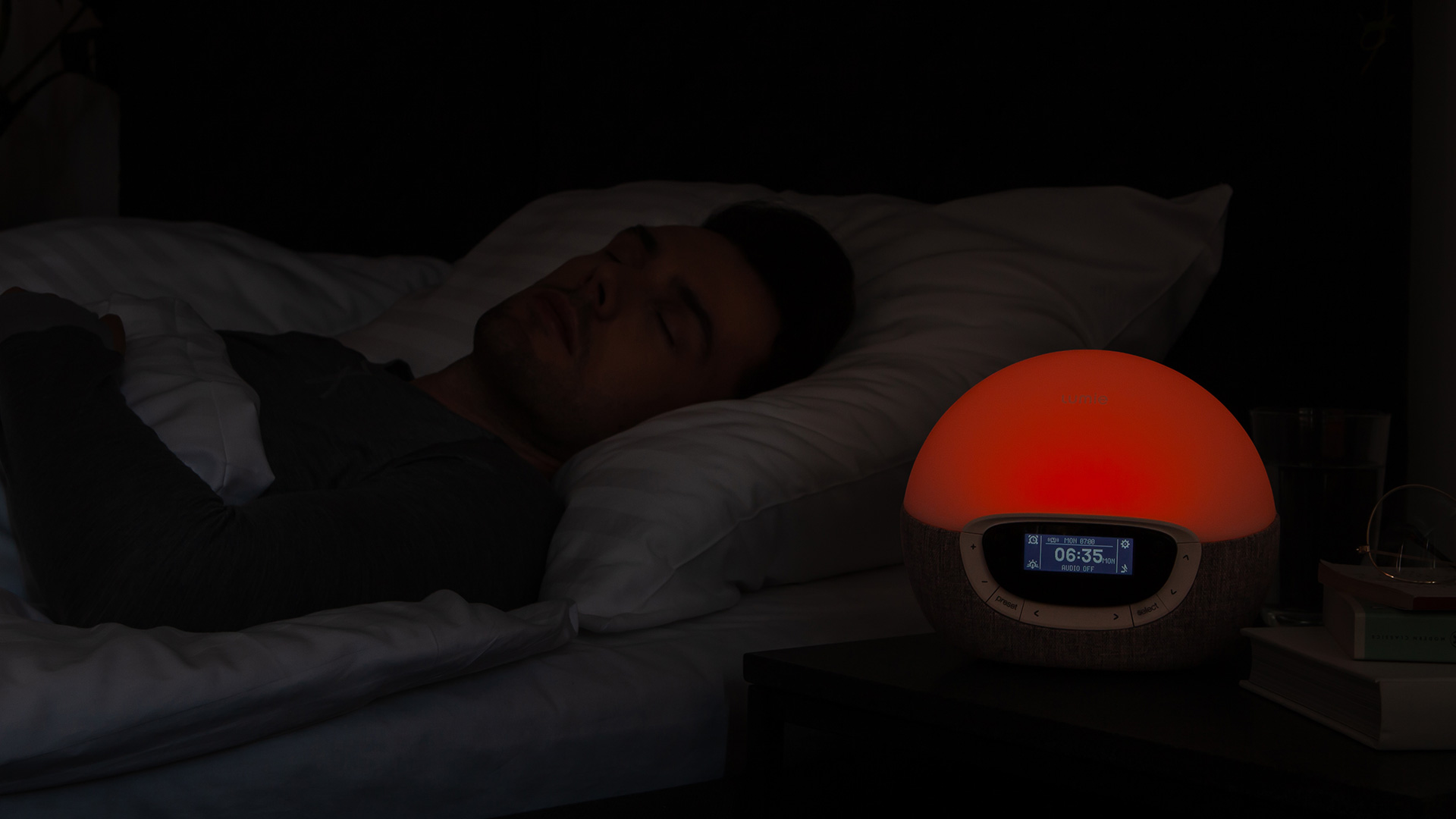Lumie Bodyclock Shine 300 wake-up light review: feature-rich but a bit fiddly
The Lumie Bodyclock Shine 300 will wake you up or send you off to sleep with its gradually altering light intensity and soothing sounds. Here's our review


The Lumie Bodyclock Shine 300 packs plenty of features that you can fine-tune for exactly the kind of gentle wake-up or bedtime routine that suits you. Once you've gone through the palaver of setting it all up via the manual buttons, you'll be sorted for a soothing sleep routine.
-
+
Display auto-dims
-
+
Adjustable to specific preferences
-
+
Stylish and high build quality
-
-
Fiddly to control
-
-
No digital radio
Why you can trust T3

The Lumie Bodyclock Shine 300 is a sunrise lamp with sunrise and sunset settings, adjustable light intensity, wide range of sounds (including white noise and FM radio) and a tap-to-snooze function. The Bodyclock range is a regular in our best wake up light ranking, and this model sits in the upper-middle of the six-strong lineup, topped bu the more feature-rich and expensive Lumie Bodyclock Luxe 750DAB. It launched in 2018, has an RRP of GBP £125 and comes with a three-year warranty and 45-day trial, during which you can see if the product works for you.
I tested one out for a month to see what it has to offer. Read on for my full Lumie Bodyclock Shine 300 review.
- Don't need the light part? Here are the best alarm clocks around
- Only want the light part? Here's our pick of the best bedside lamps right now
Lumie Bodyclock Shine 300 review: setup and design
The Lumie Bodyclock is operated by button rather than via a companion app. While it's nice to not have to download yet another app to your phone, navigating your way through the settings via the control panel isn't wholly intuitive, and feels fiddly and a bit old-school. This feeling is never more prominent than in the initial setup stage, although Lumie has helpfully provided a seven-and-a-half-minute guide to walk you through it.
While I did start to remember the different controls over time, I'd still say this is better for someone who has a regular routine and doesn't want to be able to regularly change when they wake up. I like to have alarms for different times during the week, depending on whether I'm working from home, doing a workout in the morning and so on, and for that it's a pain.
Although it's on the large side – packing in a speaker, light and control panel as it does – the design is smart and it makes an attractive addition to your bedside table. The base is in a soft, neutral grey fabric, and overall it feels high quality and well made.

Lumie Bodyclock Shine 300 review: wake up function
Almost everything about the Lumie Bodyclock Shine 300's morning cycles is customisable.You can set the duration (from 15 to 90 minutes), how bright the light gets, and the sound (if any) you want at the end of the cycle. The light transitions from dim red and to a warm yellow glow when it's time to get up, and I found the illumination soothing and natural feeling. I particularly appreciated the fact that the display auto-dims based on how bright the room is, and switches off totally at night unless you tell it not to.
I was very much sold on the idea of this more gradual wakeup, but quickly discovered that I tend to sleep with an arm over my face, so I couldn't rely on the light alone to wake me. Instead I found myself waking to the audio most days. These run the gamut from standard options (birdsong, waterfall sounds) to more left-field choices (Alpine goats, anyone?).
Get all the latest news, reviews, deals and buying guides on gorgeous tech, home and active products from the T3 experts

I found these generally much more soothing and less irritating than your standard alarm clock noise options, and even if you're more particular, there'll be at least one of the 15 to suit you. My hot tip is not to use a sound that naturally occurs in your vicinity – I initially used the birdsong option, but found myself panicking that my alarm was going off when the neighbourhood seagulls began their 5am chorus.
You can also choose FM radio if you want to keep things conventional, although we obviously can't vouch for how soothing that'll be. Like all the Bodyclocks, you can tap on the top of the lamp to snooze it for 10 minutes.
My one complaint about the wakeup function is that there doesn't seem to be a way to switch it off mid-cycle if, say, you wake up halfway through and don't want to hang around in bed waiting for the goats to kick in.
Lumie Bodyclock Shine 300 review: other features
The lumie Bodyclock Shine 300 boasts a range of other options, key among which is the wind down function. This basically does the same thing as the wakeup cycle but in reverse, i.e. gradually dims to help you chill out before bedtime. The output here features reduced blue light, and is designed to promote the production of melatonin, to help you feel sleepy. Like the sunrise option, you can set the duration from 15 minutes right up to 90.
Again, I found the quality of light soothing, but in general I found the idea of this more appealing than the actual experience. You can't really do anything by the light after about halfway through the cycle, so you're just sort of lying there waiting for the light to switch off. The more useful part of the wind-down cycle might be the sound options – you could use it to play white noise to help you drop off, for example.

Lumie Bodyclock Shine 300 review: verdict
Now to the key part of my Lumie Bodyclock Shine 300 review: is it worth buying? My own personal arm-over-face issues aside, this is a very good wakeup light. The ability to fine-tune the wakeup and wind down options to suit your specific preferences is a helpful addition. Perhaps a rapid 15 minute cycle, set to max final brightness and with a blast of radio will have you bouncing out of bed, or maybe you want the full 90 minutes followed by some gentle Alpine goat bleating? You can pick either, or something else altogether.
My main complaint – and the one that crops up quite a few times in other customers' reviews – is that it's a bit of a faff to control. That seems a bit unavoidable given how many variables there are to set, and the lack of app.
Lumie Bodyclock Shine 300 review: alternatives to consider
This is the cheapest of the Bodyclock range to have integrated radio – if that's not so important to you, you could also check out the Bodyclock Glow 150 (which comes with 10 wake up sound options) or even the Lumie Spark 100 (no sound, so don't pick it if there's a chance you'll find out that you sleep with an arm over your face).
If you're willing to pay a bit more to use this as your main radio/speaker as well as you alarm clock, both the Bodyclock Luxe 700FM and the range-topping Bodyclock Luxe 750DAB both include a high-quality Bluetooth speaker, and the latter also comes with digital radio.
The Shine 300 is not designed to treat Seasonal Affective Disorder, so if you suffer we have a separate guide to the best SAD lamps, which has plenty of recommendations that are built for light therapy specifically. We're particular fans of the Lumie Halo, for instance, although this does not function as a wake-up light.
If you're after something more compact, we like the Beurer WL 75 wakeup light, which relegates the controls to an app, leaving you with a more pared-back design. Of course, for minimal impact you could invest in some of the best smart bulbs, and simply set them to come on slowly in the mornings.

Ruth was T3's Outdoors and Wellness Editor from 2020 to 2022, covering hiking, camping and adventure sports kit, as well as mattresses, sleep accessories, yoga and general wellness. She's now a Homes Editor at sister site TechRadar, where she deals in all things air (vacuum cleaners, robovacs, fans and air purifiers), and hair (hair dryers, straighteners and stylers).